Long/short investing for volatile markets
With many investors heavily exposed to just a handful of stocks, now’s the time to examine how long/short strategies can help mitigate today’s equity-market risks. Here are three key ways:

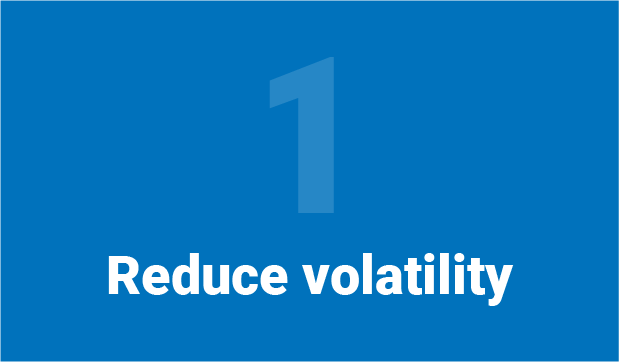
Combining long and short positions in a single diversified portfolio can help reduce volatility and potentially lead to higher compound returns.

When the stock market sells off, short positions generally appreciate, which can add ballast to a portfolio, helping to mitigate drawdowns and potentially improve risk-adjusted returns.

Short positions don’t only act as a hedge, they also represent a unique and uncorrelated source of alpha with the ability to generate positive returns in choppy or down markets.
This year is already shaping up to be very different from 2024—and more volatile
The Magnificent Seven—a group of large, growth-oriented, tech-focused companies—were some of the stock market’s top performers in 2023 and 2024. But as their valuations became more stretched and investors grew more anxious about the state of the broader economy, that momentum stalled. What worked in years past is no longer a sure thing in today’s more volatile and risk-conscious environment.
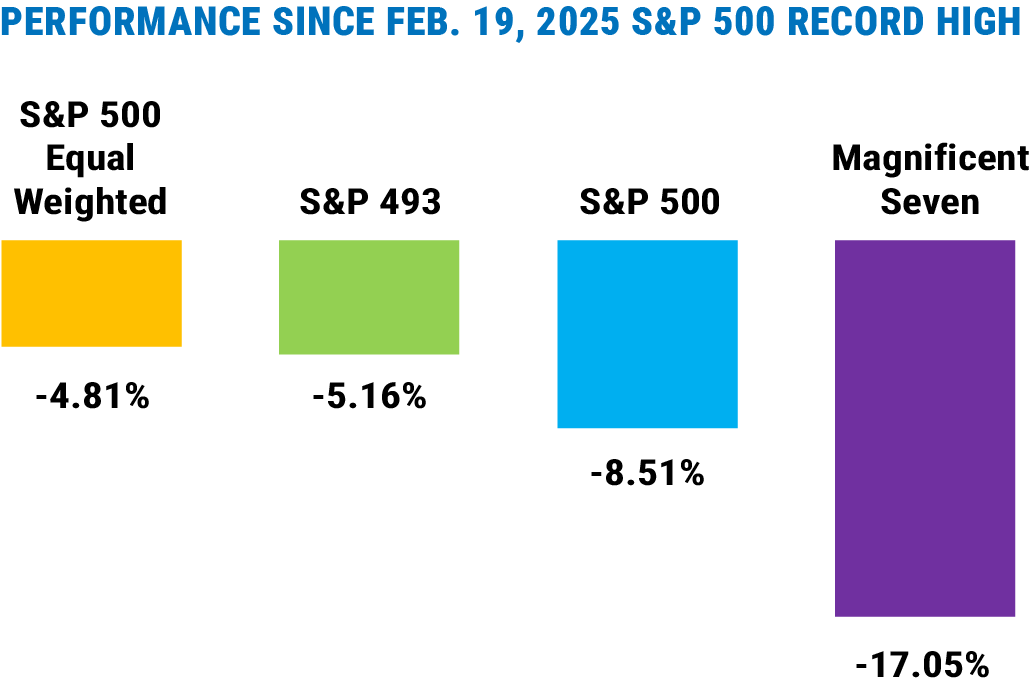
Source: Bloomberg, as of March 31, 2025. The Magnificent Seven are a group of tech-related large-cap growth stocks; for this illustration, the seven stocks are equal weighted. The S&P 493 is not an official index but reflects the performance of those stocks in the S&P 500 Index excluding the Magnificent Seven. See other important definitions below. Past performance does not guarantee future results. You cannot invest directly in an index. Information is provided for illustrative purposes only. It should not be considered a solicitation to buy or an offer to sell a security.
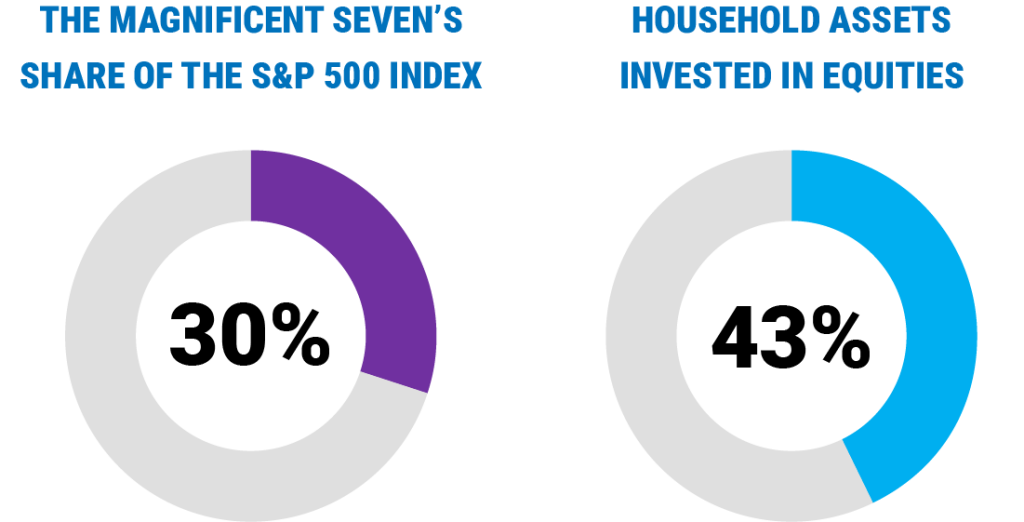
Source: Magnificent Seven via Morningstar, as of March 31, 2025; household assets via the Federal Reserve Bank of St. Louis, as of December 31, 2024. See other important definitions below. Past performance does not guarantee future results. You cannot invest directly in an index.
Investors are still heavily exposed to some of the most expensive and vulnerable stocks on the market
Despite the recent drawdown, the Magnificent Seven continue to represent a massive share of the overall stock market. That’s a potential source of concern, as investors today have record levels of household assets invested in equities—and those with passive or benchmark-oriented strategies are heavily exposed to a relatively homogeneous and expensive handful of companies.
The post-COVID environment presents new challenges and opportunities
Higher and more persistent rates of inflation, an end to the near-zero interest rate regime, and more meaningful cost of capital all represent challenges for businesses. But they also create opportunities for long/short strategies: first, by creating an environment more likely to result in disparate outcomes for individual equities and second, by offering a more meaningful source of returns for short sale proceeds in the form of higher Treasury yields.
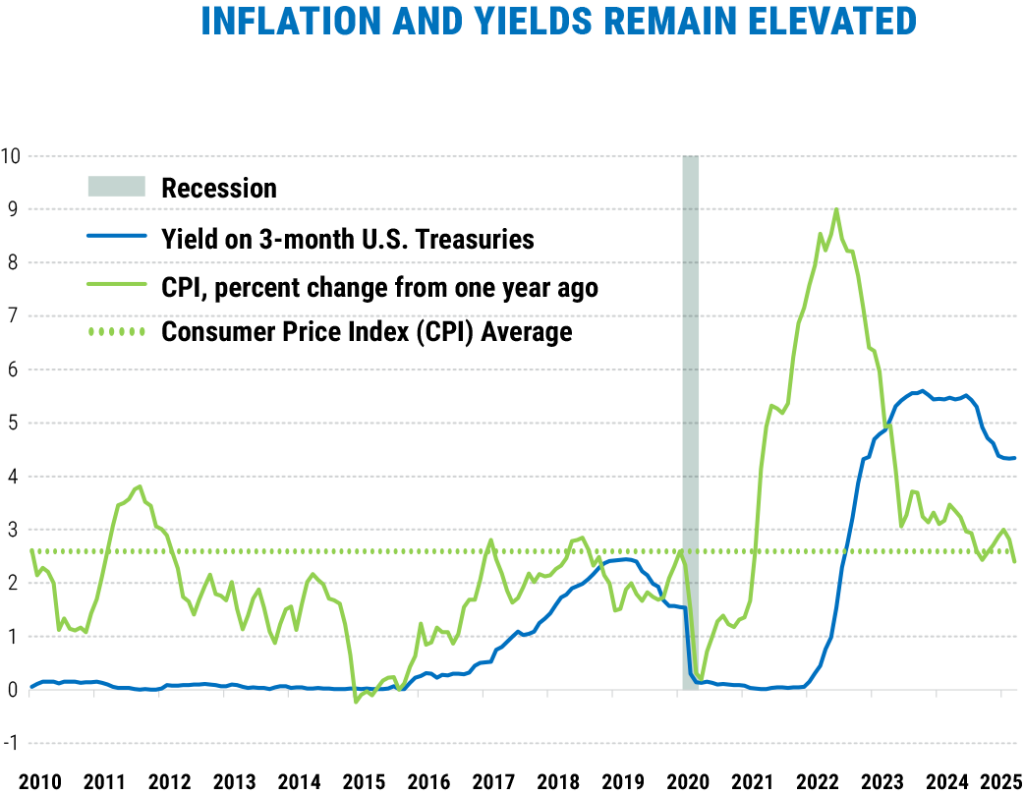
Source: Federal Reserve Bank of St. Louis, U.S. Bureau of Labor Statistics, as of March 31, 2025. See other important definitions below. Past performance does not guarantee future results.
BOSTON PARTNERS THREE CIRCLE APPROACH
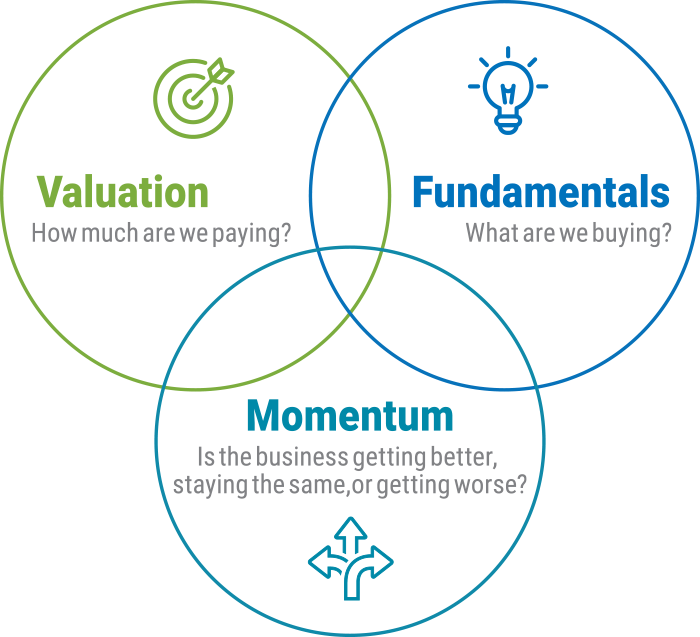
A single, time-tested approach
In our business, consistency is key. That’s why we apply a single investment philosophy to every portfolio we manage, regardless of geography or market capitalization. We call it our Three Circle approach, and our experience has shown that executing it in a repeatable fashion has led to superior results over time.
A depth of talent
Our investment division is not only well resourced, it’s also long-tenured. More than half our investment professionals have at least 20 years of industry experience and all our analysts—with an average of 10 years experience—perform short-sale research as a part of their coverage.
A highly experienced team
Boston Partners has been investing in the long/short space since 1997. Since then, we’ve successfully navigated three recessions, four bear markets, and more than a dozen stock market corrections and have consistently added value along the way. Few other firms have that level of hands-on experience in long/short investing.
Explore additional resources on long/short investing

How long/short investing can turn into a positive turblent markets
With volatility back in play and concentration risk still a major challenge, investors may want to consider making a long/short strategy a dedicated part of their portfolios.

Long/short investing at Boston Partners
Take a deeper dive into Boston Partners’ suite of long/short offerings and see how they can help dampen volatility in the markets like today’s.

Boston Partners Long/Short Equity strategy profile
Explore the long-term track record behind the strategy, its risk profile, and history of outperformance in challenging markets.
Quarterly factsheets
For more information on any of our long/short strategies or how they can work in a portfolio, contact us.
Important definitions
Alpha measures the excess risk-adjusted return of a portfolio relative to a benchmark index. The S&P 500 Index tracks the performance of the 500 largest companies traded in the United States. The S&P 500 Equal Weight Index also tracks the performance of the 500 largest companies traded in the United States, but weights each company equally, rather than proportionally according to market cap. The Magnificent Seven stocks are a group of high-performing and influential companies in the U.S. stock market: Alphabet, Amazon, Apple, Meta Platforms, Microsoft, NVIDIA, and Tesla. It is not possible to invest directly in an index.
Diversification does not assure a profit or protect against loss
7993598.1



































